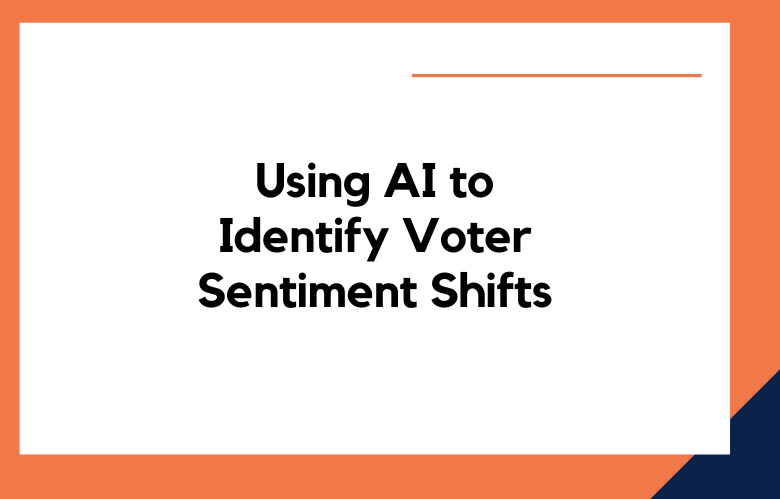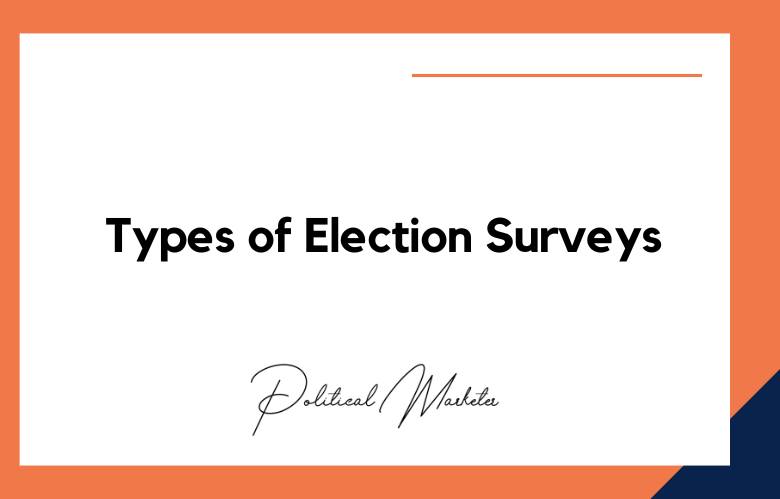Politics and elections are about capturing public sentiment, understanding the voter’s feelings, and identifying the critical shifts in their mood. Over the years, political parties have relied on traditional polling, focus groups, town hall meetings, and door-to-door surveys to understand the voters’ mood. However, with the advent of Artificial Intelligence (AI), predicting voter behavior has become easier than ever.
AI has opened the doors of unimaginable possibilities, and it is now transforming election prediction models by analyzing vast amounts of data, including social media posts, poll numbers, and demographic information. AI algorithms can identify crucial trends, hidden patterns, and fluctuations in voter sentiment that traditional polling techniques might miss out on. Professionals are leveraging AI’s capabilities to make their predictions more precise and accurate.
Understanding Sentiment Analysis:
Sentiment Analysis uses AI or machine learning algorithms to analyze text data and categorize its emotions. Sentiment analysis algorithms identify the tone, context, and overall mood behind the text and classify it into happy, sad, angry, and neutral spirits.
In political elections, sentiment analysis algorithms can analyze text data from various sources, including social media platforms and news articles, and identify the mood of the voters and significant shifts in their sentiments. This information can be used by political parties and campaign managers to understand the issues that matter the most to the voters, and they can tailor their campaigns to align with these issues.
Predictive Modeling and Voter Intent:
Predictive modeling is the process that uses a vast amount of data to predict future outcomes. In political elections, predictive modeling can anticipate how different demographic groups will vote, what issues will move them, and what factors will swing the election.
With the advent of AI, predictive modeling techniques have become more accurate and reliable than ever. AI algorithms can analyze data from various sources, including polls, social media trends, news trends, and other historical data, to understand how people are feeling and how they will vote. This analysis can provide powerful insights into voters’ responses to different issues, speeches, and candidate personas.
Social Media Analytics:
Social media platforms have become vital for political campaigns to understand voter sentiment. With billions of users, social media platforms are a treasure trove of data that can provide valuable insights into people’s feelings.
AI algorithms can analyze vast amounts of social media data to identify the mood of the voters. Social media analytics can help campaigns understand which issues are trending, which topics resonate with the voters, and which demographic groups are most active on social media.
Polling Analysis:
Polls are an essential tool for political campaigns to understand voter sentiment. However, traditional polling techniques might miss out on critical shifts in the voters’ mood. For example, if a candidate makes a viral statement on social media, traditional polls might not capture its impact.
AI algorithms can analyze polling data and data from other sources, such as social media and news trends, to identify any critical shifts in voter sentiment that might have been missed. This analysis can provide highly accurate predictions of how different demographic groups are likely to vote and how they are likely to feel about important issues.
Democratizing Democracy: Using AI to Track Voter Sentiment Shifts
Democratizing democracy has been a long-standing goal for many nations around the world. Governments have always struggled to keep citizens engaged in the democratic process, prompting many to explore innovative solutions to bridge the gap between voters and their representatives. One such solution is using Artificial Intelligence (AI) to track shifting voter sentiment and preferences.
The emergence of AI technology has led to significant advancements in political data analysis. With its ability to process and analyze vast amounts of data, AI has made it possible to track political trends accurately, including voter sentiment. By analyzing social media platforms, news articles, and other online discussions, AI algorithms can provide valuable insights into the developing attitudes of voters.
The Power of AI: Unveiling Voter Sentiment Shifts
Artificial intelligence (AI) has made significant strides in various areas recently. One such area is the ability to analyze voter sentiment shifts. This is particularly important during election season, as understanding the opinions and attitudes of potential voters is critical for any political campaign.
Using machine learning algorithms and sophisticated natural language processing (NLP) techniques, AI can quickly analyze vast amounts of data from social media platforms, news outlets, and other online sources. This allows political campaigns to gauge the sentiments of different voter groups, identify key issues that are important to them, and tailor their messaging accordingly.
Sentiment Detectors: AI’s Insight into Changing Voter Opinions
In the modern era, Artificial Intelligence (AI) has advanced significantly and has become a valuable tool in understanding human behavior. One of AI’s most prominent uses is sentiment analysis, which is the ability to interpret and analyze a language’s emotional tone or attitude. Recently, sentiment detection has gained attention for its potential to provide insight into changing voter opinions.
Traditional methods such as surveys and polls have been used to gather data on public opinion. However, these methods have their shortcomings. Surveys and polls can have response bias, meaning the results may not represent the broader population.
They can be expensive and time-consuming to conduct. With sentiment analysis through AI, social media platforms and other text data sources can be analyzed to gauge public opinion quickly and accurately.
Cracking the Code: How AI Predicts Voter Sentiment Shifts
Artificial intelligence (AI) has recently become increasingly common in elections and politics. One of its most significant applications is predicting voter sentiment shifts, which is crucial for any political campaign. Understanding the changes in voters’ attitudes and preferences can help politicians make informed decisions and tailor their messages and strategies accordingly.
AI-based sentiment analysis tools can quickly and accurately identify patterns in social media posts, news articles, and other sources of public opinion. These tools work by analyzing words, phrases, tone, and even emojis to determine the sentiment of a particular message or post. AI can also identify trending topics and issues, making it easier for politicians and policymakers to address voters’ concerns.
AI as a Political Barometer: Identifying Voter Sentiment Trends
Artificial intelligence (AI) has gained traction recently, particularly in political analysis. Governments, political parties, and their respective leaders are adopting AI-driven tools and platforms to understand voter sentiment trends better and tailor their messages more effectively.
This emerging field of political AI can be a powerful barometer of public opinion, giving decision-makers a better understanding of how the electorate feels and what issues resonate with them.
One of the critical benefits of AI-driven political analysis is the ability to sift through vast amounts of data from multiple sources. By leveraging machine learning algorithms, these tools can analyze voter behavior across various social media platforms, news outlets, and online forums. This allows researchers to identify trends and patterns that might be missed, giving them a more accurate snapshot of how people respond to political issues.
AI’s Role in the Political Landscape: Analyzing Voter Sentiment Changes
Artificial intelligence (AI) has gained traction recently, particularly in political analysis. Governments, political parties, and their respective leaders are adopting AI-driven tools and platforms to understand voter sentiment trends better and tailor their messages more effectively.
This emerging field of political AI can be a powerful barometer of public opinion, giving decision-makers a better understanding of how the electorate feels and what issues resonate with them.
One of the critical benefits of AI-driven political analysis is the ability to sift through vast amounts of data from multiple sources. By leveraging machine learning algorithms, these tools can analyze voter behavior across various social media platforms, news outlets, and online forums. This allows researchers to identify trends and patterns that might be missed, giving them a more accurate snapshot of how people respond to political issues.
Conclusion:
As the world becomes increasingly digital, AI rapidly transforms how we analyze data and make decisions. AI in election predictions can accurately predict voter sentiment, understand voter issues better, and tailor political campaigns’ messaging and outreach accordingly.
This new technology provides a robust and efficient way to understand the voters’ mood and predicts the most likely outcomes in a given election. Using AI, political campaigners can guarantee an accurate understanding of the voters’ needs and concerns and ensure that they reach the people who matter the most.
Call: +91 9848321284
Email: [email protected]










